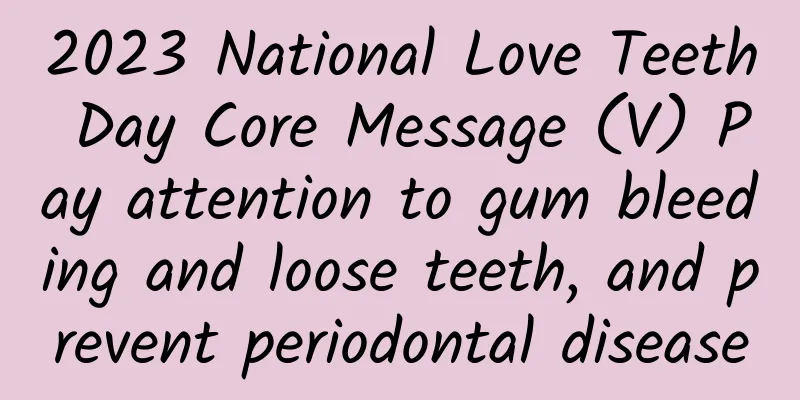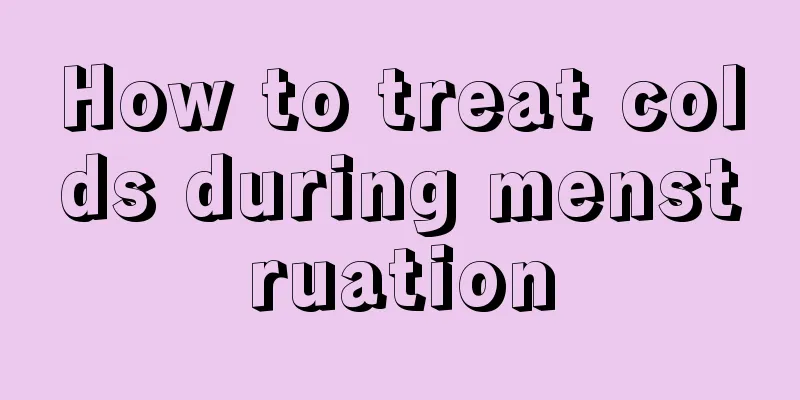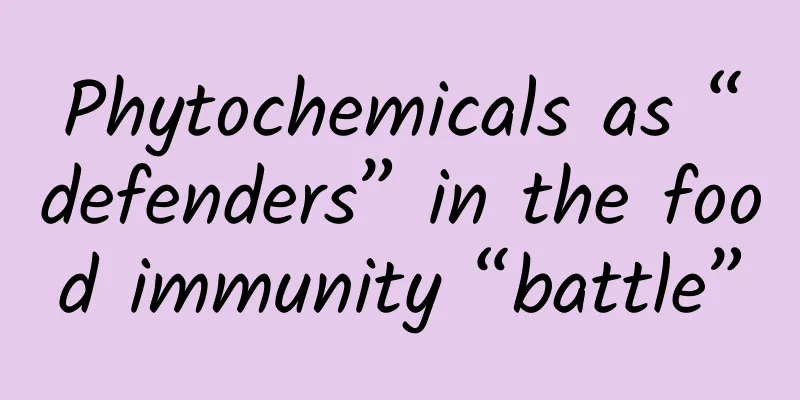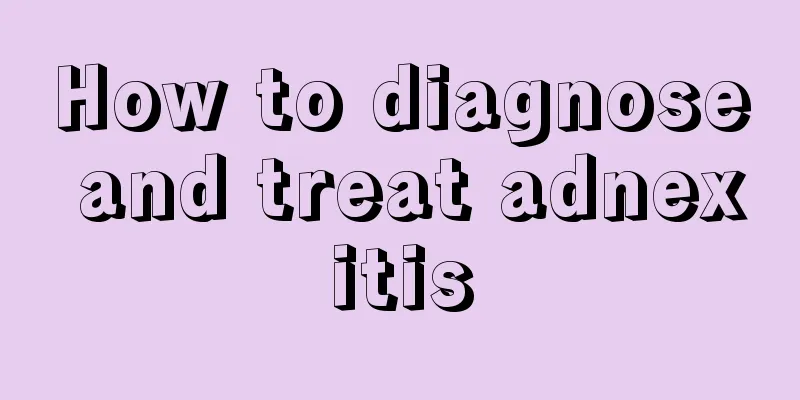2023 National Love Teeth Day Core Message (V) Pay attention to gum bleeding and loose teeth, and prevent periodontal disease

|
Author: Wang Sisi Siyan, Peking University School of Stomatology Periodontal disease is one of the most common diseases that affect oral health. It is a disease that occurs in the supporting tissues around the teeth. A schematic diagram of the periodontal tissue is shown in Figure 1. Figure 1 Schematic diagram of periodontal tissue A healthy tooth is like a big tree, and the gums and alveolar bone surrounding the tooth are like the soil around the tree roots. Adverse environmental factors will cause soil erosion, expose the tree roots, and even cause the tree to tilt and collapse. Similarly, if bacteria and tartar on the tooth surface are not removed in time, it will cause the gums to recede and the alveolar bone to be absorbed, just like soil erosion on a big tree, which will eventually cause the teeth to loosen or even fall off (Figure 2). Figure 2 Periodontal disease is like "soil erosion" Generally speaking, periodontal disease mainly includes gingivitis and periodontitis. Gingivitis is milder, while periodontitis is more serious. If gingivitis is not controlled, it may further develop into periodontitis. Gingivitis can cause red and swollen gums (Figure 3), bleeding gums (Figure 4), bad breath, etc. Normal gums are pink, thin and close to the teeth. When the gums are inflamed, they are bright red or even dark red, and become soft and enlarged. People with gingivitis often find that their gums bleed when they brush their teeth or bite hard objects. It should be noted that bleeding gums are a dangerous sign of unhealthy gums. If you find bleeding gums, you need to see a doctor in time. In addition, gingivitis is often accompanied by bad breath, which affects people's social interactions. Figure 3 Red and swollen gums Figure 4 Gingival bleeding (arrow points) In addition to symptoms such as red, swollen and bleeding gums and bad breath, periodontitis can also cause the gums to form a "bag" around the teeth due to inflammation. This is the periodontal pocket. Pus will also form a "periodontal abscess" (Figure 5) in the "bag", causing pain, bad breath, etc. Patients with periodontitis often experience gum atrophy, exposed tooth roots, and teeth that appear to be getting longer and longer. This is because the alveolar bone that supports the teeth is absorbed due to inflammation. Teeth that lose the support of the alveolar bone will become loose and shift (Figure 6), causing patients to feel that the gaps between teeth have become larger, affecting their appearance. As periodontitis progresses, the alveolar bone is constantly absorbed, and there is less and less bone supporting the teeth. The teeth become looser and less powerful when biting. When periodontitis develops further, the teeth may even become loose and fall off naturally, affecting facial shape and chewing. Figure 5 Periodontal abscess (arrow points) Figure 6 Gum recession, exposed tooth roots, and tooth displacement If gingivitis is treated in time, the bacteria and tartar on the teeth are removed, and daily cleaning is done, the gingival inflammation will be eliminated, and the shape and texture of the gums can return to normal. Therefore, gingivitis is reversible. However, once it develops into periodontitis, even if the bacteria and tartar are removed through treatment, just as it is difficult to restore the soil after soil erosion, the absorbed alveolar bone and receded gums are difficult to grow back. Treatment can only be used to stop the progression of inflammation and prevent greater damage (Figure 7, Figure 8). Therefore, periodontitis is irreversible. Figure 7 Before periodontal treatment Figure 8 After periodontal treatment Among the elderly, periodontal disease is the main cause of tooth loss. Therefore, if the elderly have problems such as red and swollen gums, bleeding, bad breath, loose and displaced teeth, they need to be vigilant, seek medical treatment in time, actively treat periodontal disease, and try to retain natural teeth. It is recommended that the elderly have regular oral examinations to detect and treat periodontal disease early. The earlier the treatment, the more periodontal tissue can be retained. Elderly people who have received periodontal treatment also need regular check-ups to maintain the treatment effect. |
Recommend
What is the cause of women's inverted nipples and how to treat them
Nowadays, women's breasts are a symbol of bea...
The fetus is moving all night. What's going on?
After a period of development in the pregnant wom...
Can I drink mutton soup after miscarriage?
After an abortion, in order to restore the body t...
Try not to have surgery for uterine fibroids
First of all, we say that not all patients with u...
I'm under a lot of pressure! Should I see a psychologist?
Insomnia, anxiety, irritability... The fast-paced...
Can you be jealous during confinement?
What women eat during the confinement period is p...
What tests can be done to diagnose cervical prolapse?
Cervical prolapse is a common gynecological disea...
Is it normal for women to have delayed menstruation?
Maybe many of our female friends are prone to del...
What is the reason for white tofu residue at the female urethra?
As we all know, the female vagina is a very sensi...
Light bleeding a few days before your period
Irregular vaginal bleeding is a problem that all ...
What is aerobic vaginitis?
Many people are not very clear about the disease ...
Let's learn about "fire" in traditional Chinese medicine
In daily life, we often hear "Oh, I'm ge...
What causes frequent vaginal bleeding?
I believe that women would be shocked if they hav...
What are the dangers of women staying up late often?
In modern life, we often hear the term "stay...
White stuff in breast milk nipples
Some friends who are breastfeeding will find whit...









